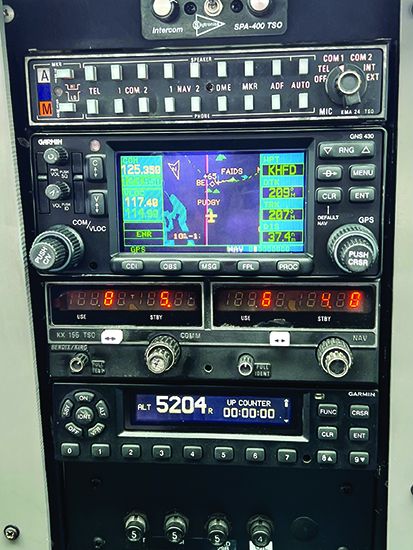GARMIN GNS NAVIGATORS
Chopping the master switch and watching the Garmin GNS 430W power down after a recent trip through the clag and an RNAV approach, I couldn’t help but think of the good utility these units offer—even though the first GNS was introduced over 25 years ago. Yes, the display technology shows its age compared to the graphics on newer units, and there’s no touchscreen, but it’s easy to see why Garmin’s GNS navigators are arguably the most successful and quite possibly the most installed avionics ever. They simply get the job done.
Following Garmin’s announcement that it plans to phase out factory support for the GNS-series navigators, a lot of owners have been asking what they should do with the ones in their panel. I know what I would do—think about selling it.
With hundreds of thousands of GNS units in service, Garmin advises owners to start thinking about upgrade strategies within the next year as service parts will become scarce, and it will eventually sunset GNS repair support forever. That’s not great news for those who recently paid top dollar for used GNS units, or for those who are perfectly content with ones they bought a while ago.
If you aren’t ready to buy replacements, consider that Garmin still offers flat-rate repair service on the units, and no it isn’t cheap. For the GNS 430W it’s $1970 and $2470 for the larger GNS 530W. Garmin has been providing good service for these hard-working units and a flat-rate repair has been a good way to spiff up an aging workhorse. Common repairs include new display lenses and bezel keys, plus tweaks and repairs to the receiver boards. Each unit is shipped back with a six-month warranty, but only on the work that was done to it. Factory-repaired GNSs have notoriously fetched top dollar on the used market and far as I can tell, Garmin’s announcement hasn’t plummeted prices yet. I found WAAS 430s listed for roughly $6000 and 530s for around $8000—with more dollars tacked on for recent factory repairs. Still, spending $2000-plus on a soon-to-be-obsolete unit could be throwing good money after bad. But if you’ve recently spent that money, I bet there will be shops that will pay top dollar for good GNS units to stockpile for exchanges and repairs.
REDUCED USEFUL LOAD
Starting with this issue, the magazine’s print-copy page count has been reduced, but thankfully we can make up the difference digitally, and I’ll be sure not to reduce the number of reports we deliver every month. Maybe some of the photos will be smaller in print. It’s no surprise that a paper shortage and increases in postage and production costs forced the company to dial back the paper. Frankly, I’d rather have that additional budget to put toward reporting—from visiting manufacturers and tradeshows to more in-depth product evaluations and inflight testing.
When my work with Aviation Consumer started around 1995, I was impressed at the number of readers who save each and every issue of the magazine and it’s one reason we have retained a three-hole-punched newsletter format—and why we’ll still deliver our content on paper, while increasing the subscriber-only material over on the digital side. This got me thinking about how digital content has changed the way I read, just when my wife Ericka asked if I was going to get rid of all the magazines piled up on the kitchen counter. Nicely produced bicycling, motorcycling, music and aviation mags collecting dust because I haven’t picked one of them up, but read most of the content digitally. While it’s sort of depressing that I can’t find the time to chill with a good-old print magazine, reading the stuff on my iPhone and computer has become a way of life. How about you? —Larry Anglisano


